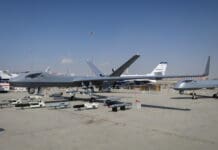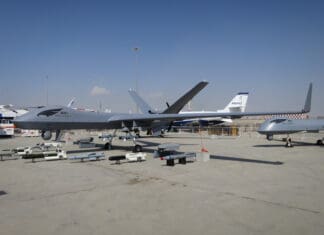This post is also available in:
 עברית (Hebrew)
עברית (Hebrew)
A new class of small, ground robots is being pitched for frontline missions: low-cost, networked unmanned ground vehicles (UGVs) that operate in coordinated swarms to detect, track and apply anti-armor effects. The FireAnt family, introduced by a U.S. developer, illustrates the shift toward attritable, mission-modular ground robotics intended to extend sensing and strike closer to adversary formations.
FireAnt units are built around three core ideas: swarm autonomy, modular payloads and operational ruggedness. In groups, they share targeting data and re-task among themselves in real time, allowing a single operator to supervise multiple units rather than control each robot directly. That shared situational picture is designed to shorten decision cycles and accelerate the kill-chain — from detection to engagement — while keeping humans in overall command.
Modularity is central: each vehicle can accept a range of payloads for reconnaissance, mapping, communications relay or anti-armor effects, which are intended to be swapped quickly in the field. The emphasis on low unit cost and attritability follows a broader trend: rather than replacing expensive, manned systems, such robots are intended to overwhelm or distract heavy platforms through massed, coordinated action.
On the technical side, FireAnt is described as interoperable with common robotic frameworks (ROS 2 and JAUS), facilitating integration into wider command-and-control systems and mixed teams of robots and personnel. The platform is hardened for field conditions to an IP67 level and engineered to resist heat, vibration and shock, enabling deployment in urban, desert or mixed-terrain environments.
According to Interesting Engineering, tactically, ground robotic swarms echo successful concepts from small aerial systems, offering distributed sensing and localized effects without exposing troops to direct risk. Economically, a swarm approach can shift calculations: many inexpensive, networked units offer alternatives to a single high-cost guided munition.
As militaries explore mixed human–robot formations, systems like FireAnt raise operational and ethical questions about autonomy, command responsibility and countermeasures. From a technology perspective, the platform highlights current priorities in robotics: resilient networking, modular payload design and software interoperability as enablers of swarm behaviour on the ground.


























